The Importance of Hearing in Childhood
Hearing plays a significant role in a child’s healthy development. Children rely on their sense of hearing, particularly in social interactions with their surroundings, peers, parents and during their school life. From birth and throughout childhood, they learn their language and how to communicate with others through hearing. That’s why it’s so important to detect hearing damage and hearing loss in children early, not only with newborn hearing screening within the first three days of life, but also throughout childhood. Regular hearing tests and appropriate treatment can help a child reach their full potential despite hearing loss. Discover why childhood hearing screening is so important and explore the different types of hearing tests available for children.
Why Is Childhood Hearing Screening So Important?
The number of children affected by hearing loss doubles during early childhood.
- About 3 in 1,000 newborns are affected by hearing loss.
- By school age , this number rises to approximately 6 in 1,000 children.
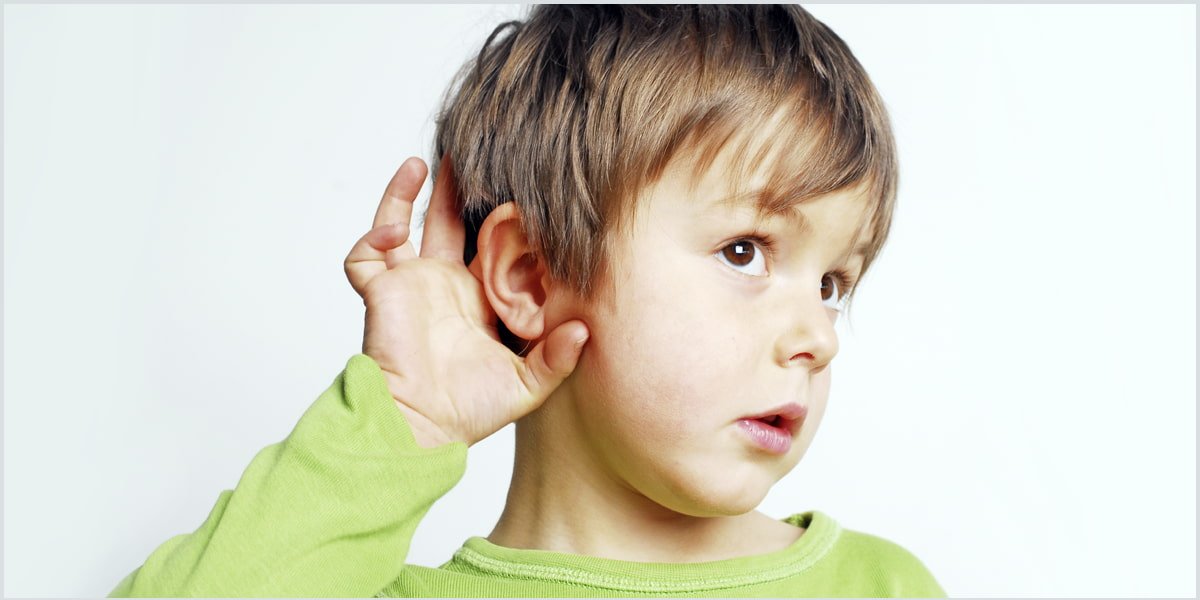
Because hearing impairment in children is not uncommon, periodic hearing screening throughout childhood is recommended. Only early detection of hearing impairment allows doctors to intervene promptly.
The importance of early detection becomes clear when we consider the risks of undiagnosed and untreated hearing loss in children. As mentioned, hearing has a crucial impact on language and speech development. With hearing, a child can interact and communicate with its surroundings. To learn about the world and life, children especially need to hear their environment, especially their parents, peer group and during their school life. Otherwise, untreated hearing loss can lead to social isolation, a lack of social skills, mental health issues, and academic difficulties. In summary, untreated hearing loss leads to children being socially excluded and unable to reach their full potential.
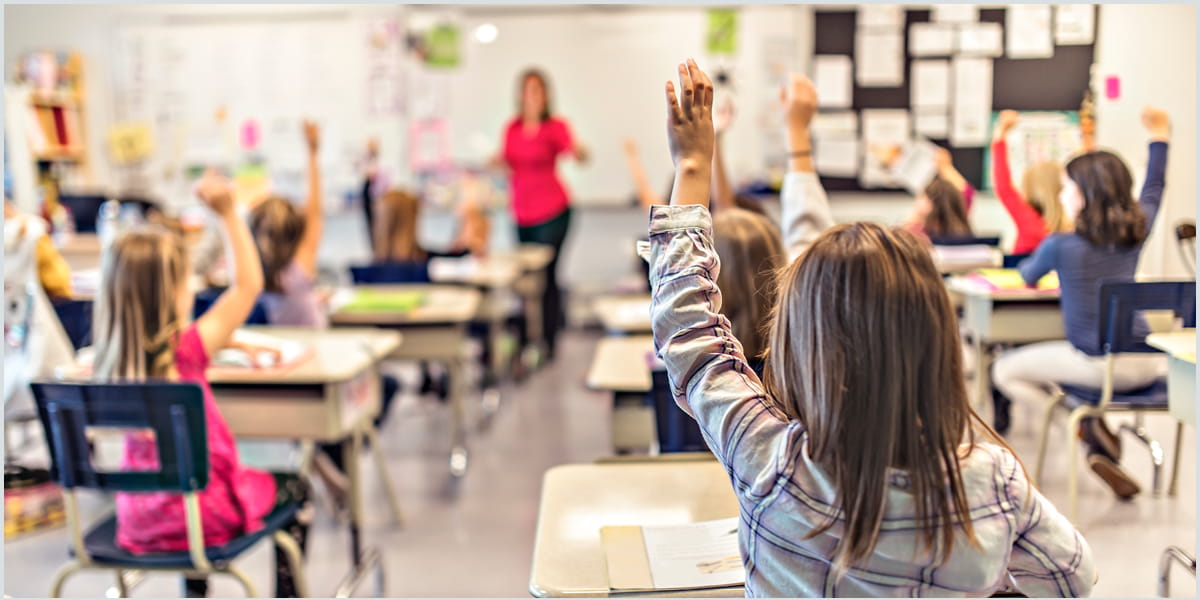
How Hearing Loss Occurs in Childhood
Hearing loss is one of the most common birth defects worldwide. This is understandable considering that human hearing begins to develop as early as the 19th week of pregnancy in the womb, and hearing loss can often be detected immediately after birth through newborn hearing screening .
However, even if the newborn hearing screening is normal, hearing loss can develop at a later stage during childhood. The likelihood of developing hearing loss during childhood is twice as high as at birth. A reason for that could be that children are more likely to have middle ear infections or ear injuries due to their playful nature, which are not detected or treated in time.
Hearing loss in children is generally divided into temporary and permanent hearing loss.
- Temporary hearing loss is often caused by blockages in the outer or middle ear, such as fluid buildup or infections. These cases are usually mild to moderate and improve with proper treatment (e.g., medication or ear tubes).
- Permanent hearing loss can occur at birth or later in childhood. It can range from mild to severe and affect one or both ears.
Sometimes the temporary hearing loss lasts longer, which could impact speech and language development of children as well, which is why it should not be taken lightly.
Hearing impairment or hearing loss, whether temporary or permanent, can be well treated. The key is that it is detected early. This is where childhood hearing screening comes into play. It offers many testing options for different ages and circumstances.
How Childhood Hearing Screening Works
Childhood hearing screening should be conducted regularly, for example during well-child visits with a primary care physician or annual school hearing screening. This is particularly important, considering that newborn hearing screening can only detect hearing loss that is congenital or occurs shortly after birth, whereas hearing impairments more frequently occur during childhood. If children do not pass the test, they should be referred to an audiologist for a deeper hearing evaluation.
Different tests are used for childhood hearing screening, depending on the child’s age and ability to respond:
Pure Tone Audiometry (PTA) – The Standard for School-Age Children
Since the mid-1960s, Pure Tone Audiometry (PTA) has been used for school-age children.
- The child listens to played tones and responds by raising their hand or, for example, placing objects in a basket.
- The screener manually operates the audiometer and documents responses.
- The test determines hearing thresholds for each ear.
Today, audiometers that use this or a similar response method are, of course, much more modern. For example, MAICO offers the easyTone for response-based hearing screening – an intuitive tablet solution for quick audiometry. In this pure tone audiometry with threshold determination, children also must raise their hand when they hear the played sound.
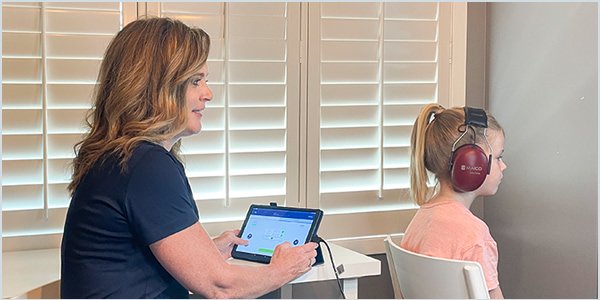
A more playful solution for children is offered by innovations such as the PILOT TEST. This audiometer, specially developed for children in pre-school age, tests not only hearing but also speech comprehension, making it clear whether what is understood can also be implemented. Children are asked via headphones to point to various terms on a picture board. The difficulty of the tasks gradually increases as the volume of the spoken sentences is automatically reduced.
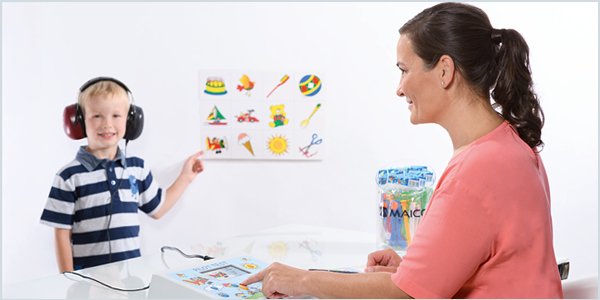
However, children under the age of three cannot be tested with a classic pure tone audiometer, as this form of testing requires an active response. Fortunately, in the late 1990’s, OAE and ABR as a testing methods were invented which helped to advance not only newborn hearing screening worldwide , because they didn’t require the test subject to interact , but also the hearing screening of younger children under the age of 3.
1. Otoacoustic Emissions (OAE) Test – For Younger Children and Newborns
- Introduced in the late 1990s, the OAE test is ideal for children under three years old who cannot provide an active response.
- The test is used to check the function of hair cells in the inner ear by measuring the echo produced when sound waves hit the ear.
- Using the ERO•SCAN from MAICO, a small probe is placed in the ear canal, emitting sounds and measuring the echo from the inner ear.
- If an echo is detected, normal hearing is indicated. If there is no echo, further tests are required.
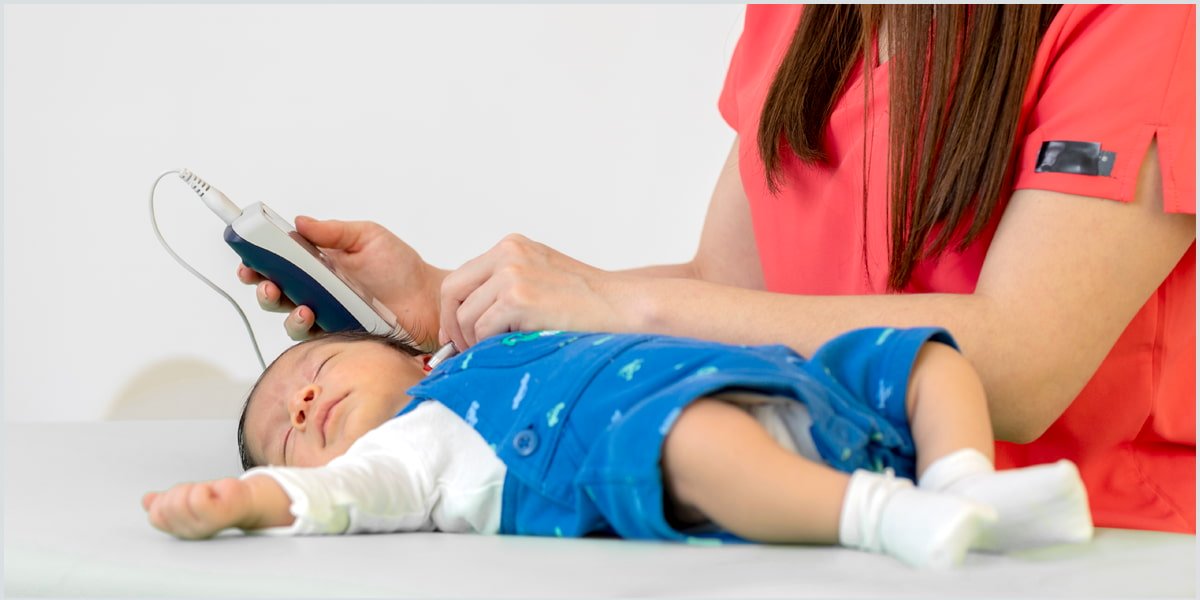
2. Auditory Brainstem Response (ABR) – Measuring Brain Activity
- The ABR test measures nerve activity from the auditory nerve to the brainstem.
- Using devices like MAICO’s MB 11 BERAphone®, electrodes are attached to the scalp, and the device emits sounds through a speaker to measure the brain's response, providing immediate results.
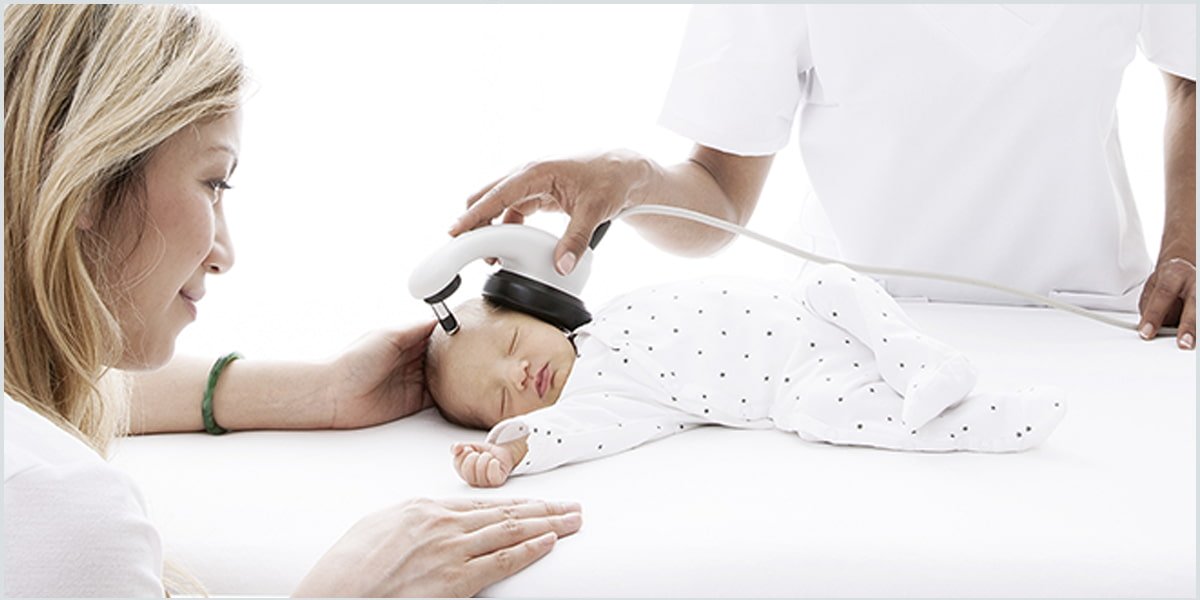
Because both tests are easy-to-use, painless, and objective , they are ideal for testing newborns and children who can’t give an active response yet.
In summary, for the healthy development of a child, proper hearing is required. Otherwise, it can lead to social isolation, a lack of social skills, academic issues and mental illness. Often underestimated are also the economic risks associated with untreated hearing loss. According to the 2021 World Hearing Report by the WHO, the annual global costs of untreated hearing loss amount to approximately 980 billion US dollars. That is not surprising when considering not only the direct costs for doctor visits, recurring hearing tests, and for the insertion of implants, but also the indirect costs. Individuals with untreated hearing may face challenges in employment, including a higher likelihood of unemployment or working in roles below their potential . The earlier hearing loss in children is detected and treated, the more likely they are to reach their full potential in adulthood. Fortunately, since the mid-1960’s we have had a range of possible testing methods, starting with the Pure tone audiometry tests which required an active response, to the innovative OAE and ABR test methods, which can be used for younger children and newborns. MAICO as a leading provider of hearing screening solutions has a lot of childhood hearing screening solutions to offer.
Key Takeaways
✔ Childhood hearing screening is crucial for detecting hearing impairment or hearing loss early. Timely detection can lead to early treatment, which is essential for a child’s development.
✔ Untreated hearing loss in childhood can lead to:
- Social isolation and a lack of social skills.
-
Academic difficulties and mental health issues
✔ Hearing loss occurs in childhood more frequently than at birth. Regular hearing tests are essential, even if a child passed the newborn hearing screening.
✔ Testing methods depend on the child’s age and ability to respond:
- Pure tone audiometry (PTA) for older children.
- OAE and ABR tests for younger children or those unable to respond actively.